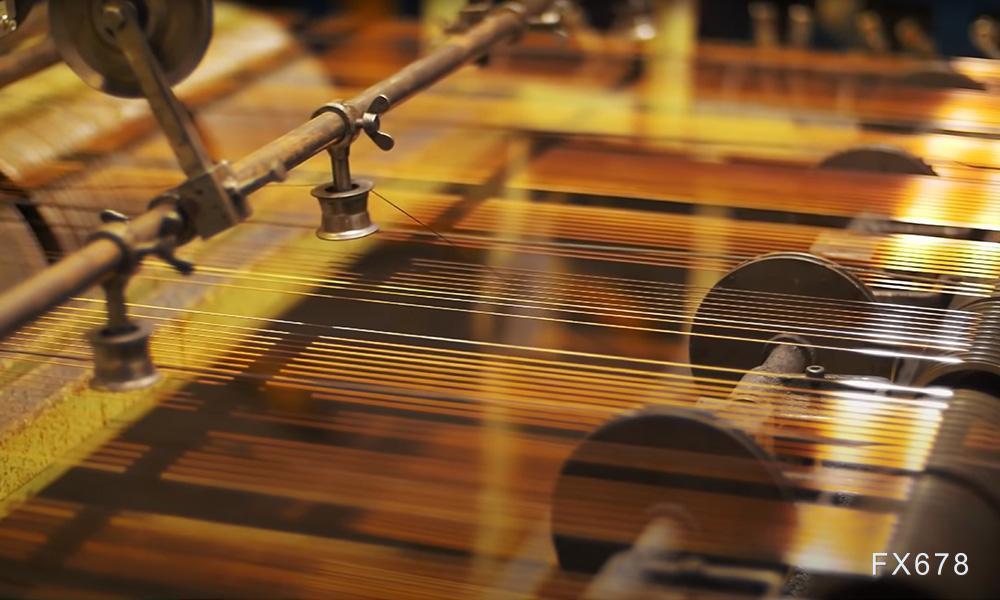CITIC Construction Investment Futures: Market sentiment is cautious, copper prices remain volatile
2025-10-17 10:08:56

Stock Index Futures: In the previous trading day, the Shanghai Composite Index rose 0.10%, the Shenzhen Component Index fell 0.25%, the ChiNext Index rose 0.38%, the STAR Market 50 Index fell 0.94%, the CSI 300 Index rose 0.26%, the SSE 50 Index rose 0.59%, the CSI 500 Index fell 0.86%, and the CSI 1000 Index fell 1.09%. Trading volume for the two markets totaled 1,931.138 billion yuan, down approximately 141.721 billion yuan from the previous trading day. Among the Shenwan primary sectors, the best performers were coal (2.35%), banks (1.35%), and food and beverages (0.97%). The worst performers were steel (-2.14%), nonferrous metals (-2.06%), and building materials (-1.86%). Regarding basis, the IF, IH, and IM basis strengthened slightly, while the IC basis weakened slightly. The annualized basis rates for the IH and IF quarterly contracts are 0.00% and -3.30%, respectively; while the annualized basis rates for the IC and IM quarterly contracts are -12.50% and -14.10%, respectively. For hedging purposes, quarterly and monthly contracts may be considered for short positions. Yesterday, the Shanghai and Shenzhen stock markets were generally volatile, with trading volume continuing to decline below 2 trillion yuan after a sharp decline in the previous trading day. Looking at the performance of primary sectors in the stock market yesterday, coal, banking, and food and beverage sectors led the gains. The best-performing sectors yesterday were all those that lagged behind in the third quarter, reflecting a gradual shift in funds after the intense trading concentration in September. Sectors that performed well around the National Day holiday, such as steel and nonferrous metals, also experienced a short-term correction. Indices, large-cap heavyweight sectors such as coal, banking, and insurance all performed strongly yesterday. Despite a significant decline in trading volume, large-cap indexes outperformed small- and mid-cap indexes. As the new round of policy window approaches, there may be further support for market sentiment. Small and medium-sized stocks may perform slightly better than the broader market due to the warming market sentiment. It is recommended to maintain long positions in IF and IM.
Stock Index Options: Last trading day, the Shanghai Composite Index rose 0.1%, the Shenzhen Component Index fell 0.25%, the ChiNext Index rose 0.38%, the STAR Market 50 Index fell 0.94%, the CSI 300 Index rose 0.26%, the SSE 50 Index rose 0.59%, the CSI 500 Index fell 0.86%, the CSI 1000 Index fell 1.09%, and the SZSE 100 ETF rose 0.26%. Trading volume for the two markets totaled 1.931138 trillion yuan, down approximately 141.7 billion yuan from the previous trading day. Among the Shenwan First-Level Sectors, the best-performing sectors were coal (2.35%), banks (1.35%), and food and beverages (0.97%). The worst-performing sectors were building materials (-1.86%), nonferrous metals (-2.06%), and steel (-2.14%). Short-term market style rotation is causing the index to remain in a high-level range. With the October policy window approaching, further policy support coupled with subsequent fundamental improvements could provide ample upside potential for the stock index. Long-term, the market is likely to experience a period of volatile growth with a gradually rising pivot. Currently, stock index futures are trading at a significant discount. During corrections, consider a covered call strategy involving long positions in stock index futures and selling out-of-the-money call options.
Treasury bond futures: Treasury bond futures rebounded on Thursday. Based on closing prices, the 30-year bond futures rose 0.42%, the 10-year bond futures rose 0.06%, the 5-year bond futures fell 0.01%, and the 2-year bond futures fell 0.01%. The yield on the active 30-year bond fell 2.5 basis points to 2.24%, the yield on the active 10-year bond fell 0.55 basis points to 1.753%, and the yield on the active 2-year bond fell 0.25 basis points to 1.4925%. Regarding inter-product spreads, the 4TS-T, 2TF-T, and 3T-TL futures spreads changed by -0.105 yuan, -0.085 yuan, and 0.285 yuan, respectively. Unilateral strategy: The bond futures rebound was driven by yesterday's slightly better-than-expected social financing data, but with a slowing trend. Furthermore, while the equity market was positive, it remained weak, leading to a stronger performance in the TL futures market. Fundamentals currently support bond futures, but institutional selling remains dominant and weighs on the market. A wait-and-see approach is recommended, with a tentative move into long positions if the correction is significant. Cross-product strategies: T-coins are expected to maintain their resilience, recommending a short (TS) and long (T) arbitrage strategy. This arbitrage strategy currently outperforms single-sided strategies. Hedging strategies: T-coin net basis has rebounded from a low level, but overall levels are not high. We recommend maintaining a long T-coin basis portfolio.
Ferroalloys: Mainstream steel prices remain in a state of flux. Maintenance at some silicomanganese plants has concluded, leading to a slight recovery in production. Ferrosilicon production has been temporarily reduced, but output remains high. Alloy warehouse receipts are seasonally declining, while futures and spot shipments are acceptable. Factories are accumulating inventory, increasing pressure on the factory side. On the demand side, steel mills are reducing output relatively slowly, putting pressure on steel demand and prices on a weak note. Steel mill profits are at a new low, increasing pressure from losses and heightening the risk of negative feedback trading. Leading anti-involutionary stocks are rallying, and coupled with next week's important meeting, market speculative sentiment is improving. However, given the current fundamentals, caution is warranted regarding rebounds. Focus on October's macroeconomic policies, the implementation of anti-involutionary industrial policies, and the direction of US-China tariffs. Viewpoint: Wait and see with the 01 futures contract; consider selling out-of-the-money put options on the 12 contract.
Shanghai Lead: Shanghai lead prices fluctuated and consolidated overnight. From a fundamental perspective, on the supply side, scrap battery procurement remains skeptical, with recyclers largely seeking to sell at higher prices, fearing price drops. This has put downward pressure on scrap battery prices. Recycled lead companies have seen some recovery from losses, but some continue to suspend production for maintenance, limiting any short-term impact from restarts. On the primary lead side, the supply and demand situation for lead concentrate remains tight, and processing fees are expected to stabilize. On the supply side, refineries in North China have partially resumed production, and with delivery deadlines approaching, overall supply is tight. On the demand side, overall restocking is limited, and there is little appetite for proactive inventory replenishment in the short term. Overall, lead prices have performed well, driven by macroeconomic sentiment, but given the limited improvement in fundamentals, the rebound is expected to be weak.
Shanghai Zinc: Overnight, Shanghai zinc prices fluctuated strongly. Macroeconomically, the collapse of US bank lending has led to a resurgence in risk aversion, and precious metals continued their strength, with non-ferrous metals following suit. From a fundamental perspective, domestic ore prices have gained a competitive edge over imported ore due to the domestic-to-export price ratio, putting upward pressure on domestic zinc prices. On the supply side, according to Steel Union research, refineries in Inner Mongolia, Henan, and Guangxi are undergoing maintenance, potentially reducing production by over 20,000 tons month-over-month. The export window opened briefly to absorb some supply, and export volumes are expected to be limited. On the demand side, overall, there was little change compared to the previous month, with cooler weather in northern China weighing on demand. Yesterday, social inventories increased by over 10,000 tons, with holiday-delayed shipments largely in place, and the spot discount has been corrected. Overall, macro sentiment remains positive, and zinc prices may rebound.
Rubber: On Thursday, domestic full latex was 14,300 yuan/ton, unchanged from the previous day; Thai No. 20 mixed rubber was 14,680 yuan/ton, up 80 yuan/ton from the previous day. Raw material prices: Yesterday, Thai rubber closed at 54.1 baht/kg, unchanged from the previous day; Thai cup rubber closed at 50.0 baht/kg, up 0.35 baht/kg from the previous day; Yunnan rubber closed at 13.5 yuan/kg, unchanged from the previous day; Hainan rubber closed at 12.9 yuan/kg, unchanged from the previous day. As of October 12, 2025, China's natural rubber social inventory was 1.08 million tons, down 7,700 tons (0.7%) from the previous day. China's total dark rubber social inventory was 660,000 tons, down 0.08%. Qingdao spot inventory decreased by 0.1%, Yunnan increased by 0.7%, and Vietnam No. 10 increased by 2.2%. Natural rubber subtotal inventory decreased by 2.8%. China's total light-colored rubber inventory reached 420,000 tons, down 1.7% month-over-month. Of this total, old whole latex inventory decreased by 1.9%, 3L inventory increased by 1.5%, and RU inventory subtotal decreased by 2%. Viewpoint: With the production period in major producing areas such as Southeast Asia nearing its end, global production is expected to show seasonal growth in the future, assuming no extreme weather events this year. Amidst renewed tensions in Sino-US trade relations, demand in the Chinese market may cool after the "anti-involution" policy. Overseas demand this year, under the pressure of tariffs, is unlikely to contribute to excess growth, exacerbating expectations of a natural rubber surplus. In the short term, until Sino-US trade relations ease, RU and NR will face unilateral pressure.
Rebar: The Fourth Plenary Session of the 20th Central Committee of the Communist Party of China may release policy signals. If more forceful growth-stabilizing policies are subsequently introduced, this could reverse market expectations. Industry-wide, rebar production fell slightly by 22,400 tons to 2.0116 million tons, while social inventories decreased by 108,900 tons to 4.5641 million tons. Factory inventories decreased by 77,000 tons to 1.8464 million tons, reflecting a 737,400-ton increase in apparent demand compared to the previous week. Rebar destocking is progressing well, with limited short-term challenges. Furthermore, prices have been trading at a low level, creating significant resistance to a further breakout. However, absolute inventories remain high, limiting potential for a rebound given the inventory pressure.
Hot-rolled Coil (HCC): This week, HRC production decreased by 14,500 tons, while inventories increased by 62,900 tons. Apparent demand rebounded by 245,800 tons to 3.1555 million tons. Short-term supply and demand pressures remain high, and peak season inventory reduction has fallen short of expectations. The impact of the Sino-US trade friction on China's direct exports has been limited, but it has negatively impacted market sentiment. Positive factors include expectations for domestic meetings and reasonable steel costs, providing some support for HRC prices. Strategically, the 3000-3200 range is recommended for rebar 2601, while the 3200-3400 range is recommended for HRC 2601.
Authorized by CITIC Construction Investment Futures Co., Ltd. to be forwarded by "a professional market analysis information website focusing on domestic futures derivatives trading": [ http:// ]
- Risk Warning and Disclaimer
- The market involves risk, and trading may not be suitable for all investors. This article is for reference only and does not constitute personal investment advice, nor does it take into account certain users’ specific investment objectives, financial situation, or other needs. Any investment decisions made based on this information are at your own risk.





















